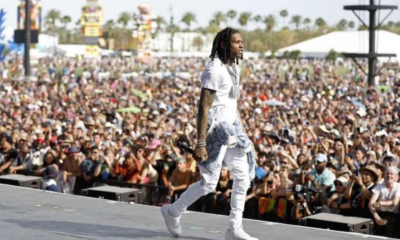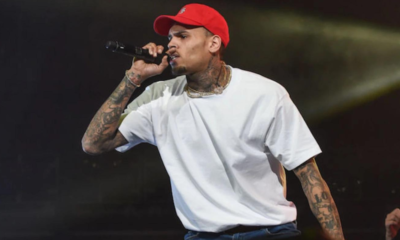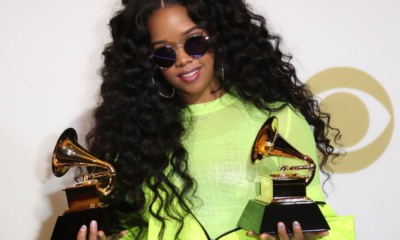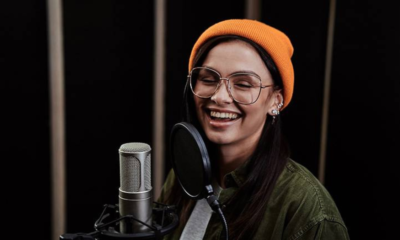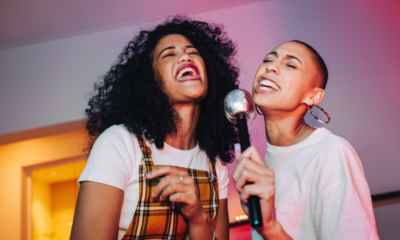Business
What Genre of Music Suits My Voice? How To Find Your Vocal Style
Awesome, you’ve decided to become a singer – but how do you decide which style of music you should sing? We have the answers for you right here…
Published
1 year agoon
By
Contributor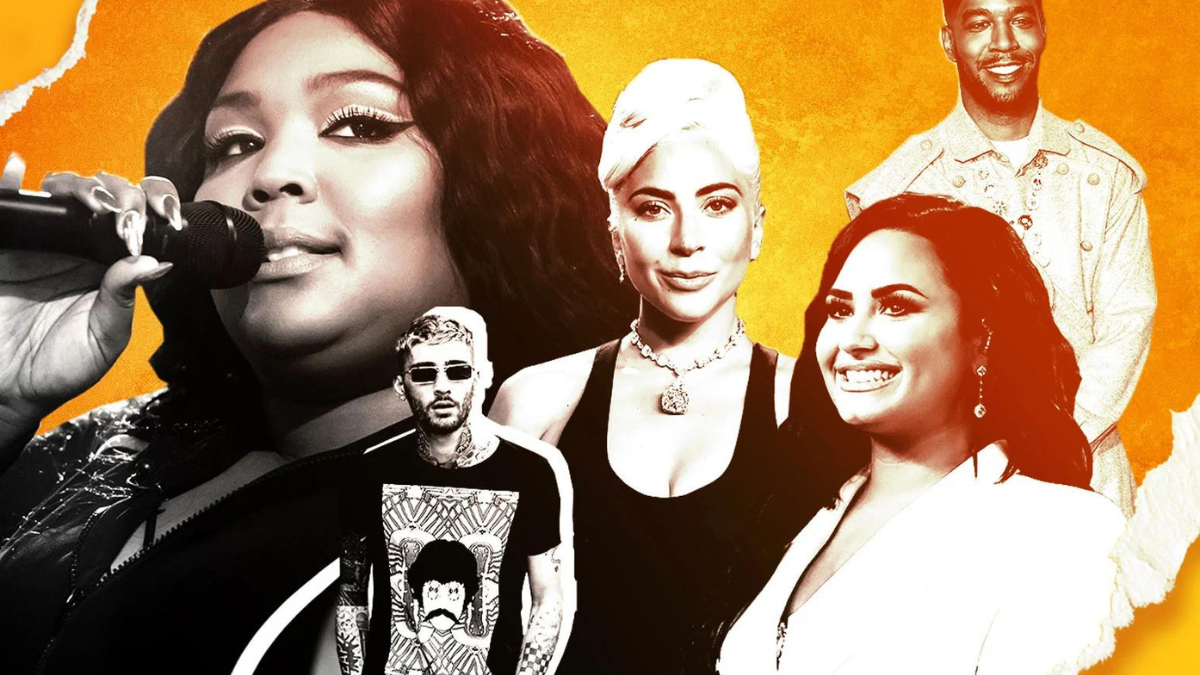
Posted on by vocalist.org.uk
Updated on 31st January 2023


Before we get stuck in, we just want to reassure you that there’s no reason whatsoever why you have to choose a particular genre of music and stick to it, or why you can’t choose multiple genres to sing in. There’s plenty of amazing music out there, and there’s always more to discover.
That being said, certain types of voice do tend to lend themselves well to certain genres of music. So, once we’ve got the basics of finding your own voice out the way, we’re going to break down the most popular singing styles of today and explore their characteristics and techniques.
But first…
What songs do you like?
First and foremost, you should sing what you love, because your joy and passion for singing a song that really means something to you will come out through your performance. Have you ever caught yourself – or been caught – singing in the shower, or humming along to the last thing you heard on the radio? That’s a good indicator that you liked what you were listening to!
If you’re not sure where to begin, or want to expand your bank of favourite songs, use apps and websites such as Spotify and YouTube which suggest similar songs to the ones you search for. Try creating a playlist of songs you like the sound of and keep listening through it to familiarise yourself with them all.
Find your vocal range
Figuring out what your vocal range is will make it easier for you to select achievable songs which you can use to hone your stylistic techniques.
Your vocal range, put simply, is measured from the lowest note you can sing to the highest note you can sing.
To find your vocal range, start with your normal speaking voice. Our voices naturally move up and down to help us express different meanings – but for now, stick to one note, and say “ahhh”.
While maintaining the same volume, lower your voice gradually until your voice starts to struggle or cuts out. Then, repeat in the opposite direction – you’ve now found where the lowest and highest notes you can comfortably sing sit.
It’s important that you’re honest with yourself about your vocal range – you might discover a whole lower octave when you catch a cold, or reach dizzying new heights when you stub your toe, but these are at the extreme ends of your range. If you try to factor these extreme notes into your range without properly warming up your singing voice or working to expand your vocal range, then you risk damaging your vocal cords.
How does it feel?
When you sing, you’ll feel your voice resonating within your body. You should feel your voice resonating in your chest when you’re singing in your normal speaking or ‘modal’ register – this is why it’s also commonly known as your ‘chest voice’.
Singing in your modal register or chest voice is your singing comfort zone – as this is naturally where you’ll aim your singing voice, try and find some songs that feel like they fit into this natural register before trying anything more adventurous.
As you raise and lower the pitch of your voice, you’ll feel it resonate in different parts of your body – up towards your head, and down towards your diaphragm. You may feel the muscles in your neck begin to tense up when you’re on the edge of your natural modal register – this is normal, but it’s your body’s way of telling you that you’re starting to overstretch yourself.
The main thing you need to remember about singing is: it should feel comfortable. Of course, singing for 2 hours a night will take its toll if you haven’t yet built up your stamina through regular practice, but it should never hurt to sing. If your voice is sore or your neck muscles are feeling strained, then take a well-earned break.


How does it sound?
If you’re confident enough to sing in front of your friends, or even perform in public at a live music event such as an open mic night, then by all means go for it! But to make sure you sound your best before sharing your singing gift with the world, we suggest learning to walk before trying to run.
A good way to hear how well you sing and to pinpoint where there’s still room for improvement is to record yourself. Most smartphones and other devices will have a function which will allow you to do this.
Now listen back – does your voice suit the song you chose to sing? Don’t be put off if you don’t like the results right away – see this instead as an opportunity to develop your voice.
Imagine yourself as a singer
Do you see yourself busting several moves flanked by a legion of back-up dancers, crooning through the haze of a dingy diver bar, or raising the hairs of the entire back row’s necks in the Royal Albert Hall as you take centre stage?
Since you’ve made the decision to become a singer, then chances are you’ve got a few musical heroes you’d like to emulate. While we’d much rather you find your own path, figuring out what makes your favourite singers so great is a sensible first step.
Before we take a look at some of the key conventions of these popular music genres, we just want to remind you that, when it comes to finding your own vocal style, there is no right or wrong answer. All that matters is that you understand your own voice’s potential and can learn to use it safely to express yourself.
However, it’s important that you know the different vocal techniques used commonly within each genre, so that you can explore them for yourself – and add more strings to your musical bow!
Here’s our genre breakdown:


How to sing: Pop
Pop music has gone through many changes since the term emerged in the mid-1950s – but, for all its different sounds and styles, it’s always been on top of the game in terms of popularity. Pop songs and pop singers often get a bad rap for being overly commercial or too ‘flavour of the month’ – but, as Justin Bieber would tell you, over 80 million monthly listeners on Spotify can’t be wrong!
Pop is the genre for you if you enjoy keeping up with the latest fashion and trends. Because pop music is often aimed towards a younger audience, many pop singers tend to sing in a higher register to make their voices sound more relatable and youthful – but this doesn’t mean you can’t sing pop if you have a lower voice.
A lot of pop singers also incorporate dance moves into their performances – so if you love a good boogie, you’ve come to the right place!


To sing in a pop style, keep your voice as close to your speaking voice as you can – leave the theatrics to the Broadway singers! The reason why a lot of pop singers do this is because it’s more relatable for the listener – it’s a lot easier for 80,000 fans to get what Ariana Grande is saying to them than to put themselves in the Phantom of the Opera’s shoes.
That’s not to say pop singers are any less talented – far from it, in fact – they’re just using different storytelling techniques. Much as pop songwriters use ‘hooks’ to ensure their compositions stick in their audience’s minds, pop singers often use certain vocal techniques and deliveries to make themselves sound unique.
One such technique is ‘falsetto’, which happens when your vocal cords tighten but don’t meet in the middle, allowing more air through to produce a high-pitched, breathy sound. This vocal technique is more noticeable in male singers, such as Prince and Justin Timberlake – who both use this technique in many of their most well-known songs – but female singers can also sing in the falsetto register.
To sing using falsetto, try to imitate the voice of a child. You should feel your falsetto voice vibrating in your nasal cavity.
Another technique is called ‘vocal fry’, which happens when your vocal cords loosen and are pushed together, obstructing your airflow to produce a low-pitched, croaky sound. Many vocalists sing in the vocal fry register to achieve lower notes – two notable examples being Enrique Iglesias during the chorus of ‘Hero’ and Britney Spears at the start of ‘…Baby One More Time’.
To sing using vocal fry, imagine you’ve just woken up and are giving the first groan of the day. You should feel your ‘frying’ voice vibrating in your throat.
Famous pop singers
Justin Bieber
Beliebers in the 2010s saw young Justin grow from boy wonder to adult sensation, with his pure, innocent pre-teen tones maturing into a breathier, more intimate vocal style, often making use of falsetto:
Billie Eilish
A shining example of how pop singers can speak volumes whilst keeping quiet, Billie Eilish manages to convey a sweetness with an underlying layer of menace – all while barely raising her voice above a whisper:
Britney Spears
You don’t earn the title of ‘Princess of Pop’ without topping the charts a few times, and a big part of this is Britney’s instantly recognisable singing voice. Britney often uses vocal fry to lead into her childlike, nasal voice, which contrasts with her more adult-themed lyrics and dance moves – proving to everyone who know her from her Mickey Mouse Club days that she’s “not that innocent”:
How to sing: Rock
Pop’s tough, rebellious cousin was born around roughly the same time, but their paths began to diverge when certain singers and songwriters got some attitude and decided they wanted to stop appealing to the masses. Even going back as far as 1964, it’s easy to see the distinction between the sweet and sentimental ‘I Only Want To Be With You’ by Dusty Springfield and the harsh, visceral ‘You Really Got Me’ by the Kinks – and the gap only widened from there onwards.
You’ll enjoy singing rock if you love being loud and in-your-face – rock music is about energy and attitude! Many famous rock singers aim for high notes for dramatic effect, such as Heart’s Ann Wilson or Led Zeppelin’s Robert Plant, but don’t worry if you can’t quite reach ear-splitting pitch – as long as you sing like you mean it, you’re still going to rock!


Rock singers still come in many shapes and sizes, but the one thing they all tend to have in common is their powerful delivery. In order to keep up with the crashing drums, screeching guitars and rumbling basses, rock vocalists have to take their singing to the next level!
To sing rock, you’re going to need to master the technique known as ‘belting’ – which is essentially musical shouting. When you belt, you push your voice from your lower register, or ‘chest voice’, into your higher register, or ‘head voice’, which allows you to produce a much more powerful high note.
Depending on how ‘hard’ or ‘heavy’ the type of rock you want to sing is, you might also want to add some ‘grit’ to your singing voice. Some people have naturally speaking raspy voices, so applying this quality to their singing voices comes easily – but you can learn to add grit to your singing voice even if you speak with a cleaner tone.
Start by growling (imagining you’re an angry dog might help!) in your natural modal register, and take note of how this feels in your throat. Once you’ve got used to this, start moving your growl around – follow a simple melody (like ‘Twinkle, Twinkle, Little Star) wordlessly at first, then add the lyrics. When you’ve got the hang of this, try singing a song you want to learn with your new gritty tone.
However, both of these techniques can cause damage to your vocal cords, so it’s important to a) use them sparingly and b) take proper care of your vocal health. For more tips on how to keep your voice healthy, read this article.
Famous rock singers
James Hetfield
The voice behind the world’s biggest metal band, James Hetfield’s voice sounds like he starts each day by eating a shovelful of gravel. Don’t try to go from naught to nails straight away, though – the Metallica frontman has professional vocal coaches and hundreds if not thousands of shows’ worth of experience backing him up.
Joan Jett
Following her tenure in the all-female rock band, the Runaways, Joan Jett poured her snarling attitude into a successful solo career. When Joan tells you she loves rock ‘n’ roll, not only do you believe her wholeheartedly, but you also can’t help but agree:
Freddie Mercury
Often cited as one of the greatest rock performers of all time, Freddie lifted Queen to the heavens every time he opened his glorious mouth. Within the first 30 seconds of ‘Don’t Stop Me Now’, you can hear his mastery of belting on “turning inside out” compared to his falsetto on “floating around”:
How to sing: Jazz
A genre which evolved from the blues whilst hanging onto its raw emotion, jazz singers are often considered the most skillful. To become a true jazz singer, you’ll need to get your music theory chops up to scratch – but here’s how you can get started.
Jazz is the genre for you if you like to keep your voice down low and the lights even lower. For your listeners, it’s all about mood, but for you, the singer, it’s all about the method.


As with all areas of jazz, improvisation is a key aspect of jazz singing, with many jazz vocalists utilising such techniques as ‘scat singing’, where the voice is used to imitate an instrument. For example, try imitating the “wah, wah” of a trombone, or the “bom, bom” of a double bass.
It’s worth learning a few scales so you’ll know instinctively which notes to play around with – read our article on how singing scales can help improve your voice for some ideas.
Another key to jazz singing is how you interpret the rhythm, or ‘feel’. Jazz numbers typically have a loose ‘swing feel’ – a ‘swung rhythm’ lengthens the first beat and shortens the second, as in ‘DUM, dah-DUM, dah-DUM’, with the shortened note ‘anticipating’ the lengthened note.
Jazz vocalists play into this looseness by avoiding singing directly on the beat. Many jazz singers add to this feel by ‘sliding’ up or down to the notes they sing, giving the vocal delivery a dreamy, laid-back quality popular with ‘crooners’ like Frank Sinatra and Dean Martin.
Pitch slides are easy enough to do – just pick a note you’re comfortable singing, then gradually increase and decrease the pitch in a single, unbroken breath. Applying this technique to actual songs can be more tricky though! Make sure you know the song well first so you know which notes you’re aiming for, and plan your breaths carefully – you’ll need more air to sing those slides uninterrupted.
The best thing you can do as a budding jazz singer is start learning jazz standards – songs which have been accepted into the regular repertoire of jazz bands worldover. Not only will this expose you to and help you memorise a broad range of jazz melodies, but it will also make it easier for you to play songs with other jazz musicians, who will also be familiar with these standards, if you’re hoping to perform with a band.
Famous jazz singers
Billie Holiday
‘Lady Day’ took the weary, laid-back feel of George Gershwin’s original standard to a whole new level. Her sultry, easy delivery is the main reason why Billie Holiday’s version of this, one of the most covered songs of all time, still stands out:
Frank Sinatra
Although technically belonging to the pop and easy-listening genres, Frank infused his singing style with plenty of jazz cool. Hear the first of his many pitch slides on the word “mo-on” downwards in the first line – and notice how he almost seems to be singing to a rhythm all of his own on “ba-by kiss me”:
Ella Fitzgerald & Louis Armstrong
Legendary jazz musicians in their own right, this duet version of the jazz standard ‘Dream a Little Dream Of Me’ performed by Ella Fitzgerald and Louis Armstrong is as close as you can get to jazz 101. Lazy and lilting, which some truly inspired scat singing on both accounts, this recording has all the technique and mood you could need:
How to sing: classical and opera
The most formal musical genre on our list, as well as the most theatrical and furthest away from your speaking voice, singers of opera and classical music are usually ‘classically trained’. If you truly want to pursue classical and opera singing, then a music teacher is your best bet – but we can give you an introduction to the main characteristics.
If you love theatrics and drama, then you’re going to love opera! A strong, powerful voice that’s perfect for letting everyone from the front row to the back exactly how you’re feeling is exactly what the opera ordered:


In the broadest sense, opera singing usually consists of classical singing set to a story in a theatre setting. Songs which are sung in a classical style, such as ‘canatas’ or religious ‘oratorios’, may sound similar, but would not be classed as opera.
To our modern ears, classical singing doesn’t sound all that close to the way we pronounce words in everyday conversation. This is because a classical singer pronounces words differently – vowel sounds are modified to allow the singer greater control of certain syllables at more extreme pitches, and clear diction is much more important, so consonants are more pronounced at the end of words.
One thing you’ll notice if you’ve ever watched an opera performance is that opera singers project their voices at a much higher volume than other singers. This is because opera is much older than microphones and other amplification technology – back in the day, opera singers had to project their voices over the orchestra pit so their audiences could hear them.
Another thing you’ll notice about opera performances is that many of them are written – and sung – in Italian. This again is largely due to tradition – opera itself originated in Italy, and ‘opera’ is the Italian word for ‘work’ – and many composers of opera opted to continue writing in Italian.
Don’t worry – we’re expecting you to become fluent in Italian just so you can sing opera! Understanding the meaning of the lyrics you’re singing will help you connect to the song’s emotional content, however, and will help you to emphasise key words and phrases to convey those emotions.
We also get the following voice classifications from Italian – knowing which of these best describes your voice will also help you figure out what sort of singing voice you have and what other musical avenues you can go down with it:
| Classification | Description | Range |
| Soprano | High female | C4 – A5 |
| Mezzo-soprano | Middle female | A3 – F#5 |
| Contralto | Low female | F3 – D5 |
| Tenor | High male | C3 – A4 |
| Baritone | Middle male | A2 – F4 |
| Bass | Low male | F2 – E4 |
A key vocal skill you’ll need to develop to sing opera is ‘vibrato’, which happens when your singing muscles pulsate, making your voice waver up and down in pitch. Because we’re able to reach higher notes without straining our vocal cords when singing with vibrato, classical and opera singers use it to convey peaks of high emotion.
Vibrato is much easier to achieve when your neck, shoulders and jaw are relaxed. Take a deep, steady breath, and sing out a single note, then gradually allow your voice to waver up and down slightly. That’s vibrato! Now try this again, but as you begin to let your voice waver, gradually increase the volume of your voice. Now you’re projecting!
Famous opera and classical singers
Luciano Pavarotti
Pavarotti’s soaring voice made him a household name when he appeared on television screens across the world as one of the Three Tenors. His dramatic performance of ‘Nessun Dorma’, one of the best-known arias from renowned composer of opera, Giacomo Puccni, cemented this as Pavarotti’s signature song:
https://www.youtube.com/embed/cWc7vYjgnTs?feature=oembed
Charlotte Church
Before crossing over into pop music, Charlotte Church took the world by storm aged just 11 years old with her pure, resounding soprano. Hear how she effortlessly opens up her vibrato on the longer notes and note the precision with which she pronounces ‘Ave Maria’:
Maria Callas
Remembered almost as fondly for her diva antics as she is for her phenomenal soprano voice, Maria Callas would give the Mariah Careys and Whitney Houstons of this world a run for their money in every sense! Maria pours her soul into this performance of Vissi d’arte (taken from another of Puccini’s operas, ‘Tosca’) which is the Italian for “I lived for art” – and we believe she meant every word:
How to sing: Hip-Hop and R&B
The most modern genres on our list, hip-hop and contemporary R&B are closely related, with many crossovers and collaborations between artists from either side. From its humble beginnings on the streets of 1970s New York, hip-hop grew to dominate the charts, influencing pop, rock, and morphing the more soul-orientated rhythm and blues genre into the R&B we know today.
If you love the way gospel music elevates your soul, but want to jam with more modern, electronic elements, then R&B has a space for you. Much as rappers need to be able to jump between words at speed whilst maintaining their flow, you’re going to need a degree of vocal agility in order to both do your own thing and keep to the beat.


While hip-hop itself is more closely associated with rapping (the speech-style, rhythmic delivery of densely rhyming phrases), the genre itself is characterised by such stylistic elements as drum machines, samples, beatboxing and turntable scratches – all of which are commonly incorporated into R&B tracks which are sung in the more traditional sense. Furthermore, many R&B tracks ‘feature’ rap artists who contribute a verse to the song, and vice versa – check out ‘Crazy In Love’ by Jay Z and Beyoncé to hear how these two vocal styles play off each other.
Pitch correction or ‘autotune’ is often used on recording of hip-hop and R&B songs, and while this can also be achieved live, you don’t want to rely on this technology when you’re still developing your own singing voice. This is often a stylistic choice for the recording.
An important technique you need to work on to sing like Whitney Houston or Usher is ‘melisma’ (also called a vocal run) which is the name given to singing one syllable over several notes.
To learn how to sing super-fast, complex vocal runs, start with some simple melismatic phrases – and, like with pitch slides, make sure you take a nice big breath beforehand. A popular vocal warm-up used by many singing teachers is to sing halfway up the major scale whilst singing ‘eeh’, then sing your way back down again whilst singing ‘aah’.
Once you’ve become a pro at this, try singing along to the vocal runs of some popular R&B artists. Try to break them down into smaller, more manageable chunks and work on these individually, then gradually piece them back together until you’re able to complete a full run.
Famous hip-hop and R&B singers:
Mariah Carey
Credited for popularising melisma in the R&B genre, Mariah rarely finishes a sentence on a single note throughout this track. Note as well that she makes full use of her range – including belting, falsetto, and her famous ‘whistle register’:
Usher
Look no further than the run Usher begins at 2:12 – backed up by a dramatic musical break – to remind yourself why Usher is an undisputed champion of his genre:
Beyoncé
Having achieved global fame with girl group Destiny’s Child only to shine even brighter as a solo star, Queen B isn’t one of the biggest singers in the world for no reason. A vocal force to be reckoned with, both on the stage and in the studio, listen to the increasingly dramatic vocal runs in this song’s second verse:
Keep singing songs from different genres
As we mentioned earlier, there’s no need for you to limit yourself to one musical genre on your journey of self-discovery. Each style of singing brings new ideas and techniques which all singers can learn from, so feel free to pick and choose as many of these tricks and tips as you like.
In fact – on your journey to discovering your true voice, why not mix and match some of these techniques? Add some pop-inspired vocal fry or falsetto to your jazzy pitch slides, or add some rock grit to your R&B-style vocal runs!
Read MORE: https://vocalist.org.uk/vocal-styles
Business
Why Are So Many Rap Concerts Getting Canceled?
From a handful of Lil Baby concert stops to large events like the Made in America festival, rap concerts have been getting canceled quite frequently in recent years.
Published
9 months agoon
August 17, 2023By
Contributor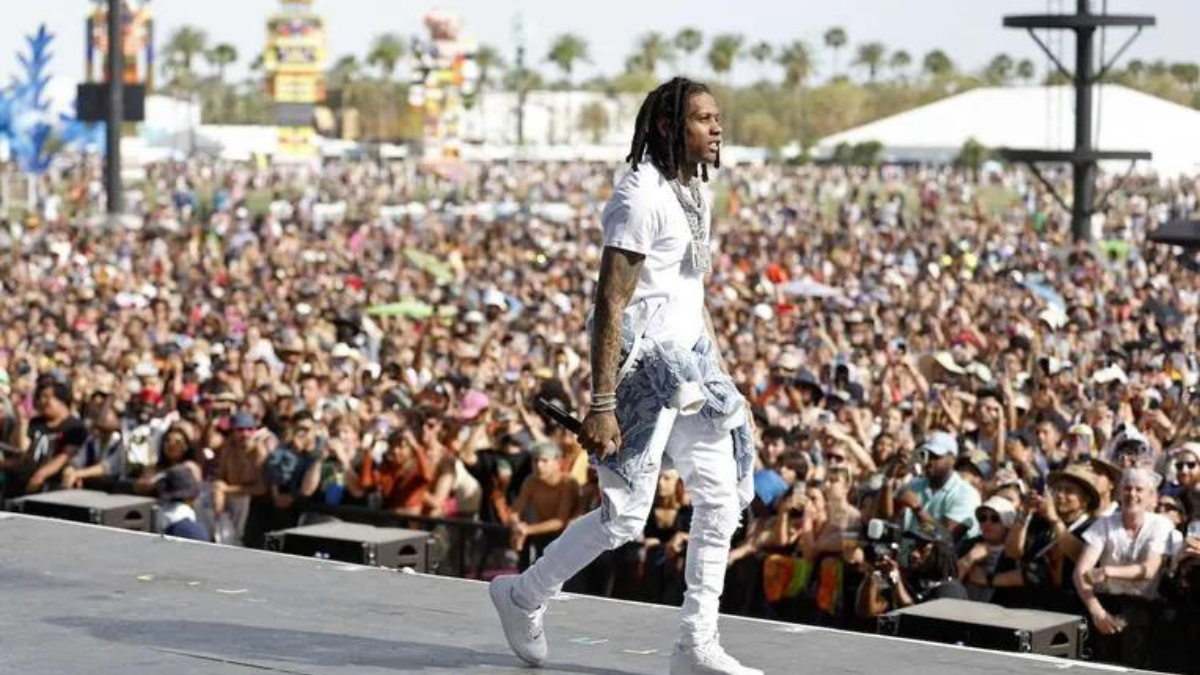



Dan Runcie


Lizzo at a concert in Minnesota (via Manitou Messenger)
Nicki Minaj’s NICKIHNDRXX Tour — canceled in North America. Chance the Rapper’s Big Day Tour — canceled everywhere. T-Pain’s 1UP DLC Tour — canceled. Cardi B’s Invasion of Privacy Tour— chose not to do one.
Touring’s traditional model needs work. Cancellations have happened for years, but this recent wave is different. Many hip-hop artists overestimate demand for ticket sales. We live in an era with endless data, but touring decisions still seem like the industry blindly throws darts. Meanwhile, artists who can sell out those same venues have proudly taken new approaches. These trends are connected.
The popularity of music festivals and concert residencies have added new variables to the live performance mix. Mainstream artists are on a quest to maximize each option. Some are farther along than others. But by the time the majority of rappers find the ideal balance, the touring business might be behind the curve.
Opportunity cost is higher than ever
When artists are on tour, they’re on the road day-in, day-out. It’s traditionally seen as a justifiable tradeoff since many artists earn a majority of their revenue from touring. But it’s still time-intensive, laborious, and costly.
Here’s what I wrote in 2018 in Why Choosing the Right Concert Venue Matters:
A few years ago, Beyoncé, like Drake, once played it safe with concert tours. In 2013 and 2014, The Mrs. Carter World Tour earned an impressive $230 million, but it took Queen Bey 132 shows and twelve months of touring to do so…
Had Beyoncé subjected herself to the same arenas for [On the Run Tour, The Formation World Tour, and On The Run II Tour], she would have needed to perform an additional 207 shows since 2014 to match the $565 million her concerts have grossed in revenue. It would have been impossible to do all those shows while pregnant with the twins, make Lemonade, and do all the other stuff Beyoncé does.
There’s only a handful of artists like Beyonce who can justify the jump to a stadium. For the rest, festivals and short-term Las Vegas residencies are a viable alternative.
But even Taylor Swift has moved on from stadium tours. This summer the 1989 singer will do a European festival run (like Cardi B did last summer), then launch her own festival, Lover Fest, in Boston and Los Angeles. It doesn’t get more 2020 than that.
In an August interview with Ryan Seacrest, she explained why she didn’t do a traditional tour:
“I’m not quite sure what we’re doing with touring. I don’t want to do the same thing every time because I don’t want my life to feel like I’m on a treadmill. There’s a lot that goes into touring that nobody knows about — like you have to reserve stadiums like a year and a half in advance, and that to me is a lot. With ‘Reputation,’ I knew that nobody would really fully understand the album until they saw it live, but this album is different because people are seeming to get it on the first listen.”
All that’s true, but let’s remember two things. First, Taylor is in a select group of artists who can sell out the Rose Bowl, Soldier Field, and MetLife Stadium on back-to-back nights. She wouldn’t forgo that opportunity unless it made financial sense. Second, she’s right about the challenge in reserving venues eighteen months in advance. It’s especially frustrating for those who rise quickly and can’t easily pivot. It’s a good problem to have, sure. But it’s still a problem.
Last year, Lizzo rose to stardom so fast that she outpaced her touring revenue. According to Billboard, last spring’s Cuz I Love You Tour was performed in front of crowds of less than 2,000 people, grossing just over $50,000 per night. To capitalize on her momentum, she came back in the fall with the Cuz I Love You Too Tour at venues that were twice the capacity. But by that point “Truth Hurts” was #1 on the charts and nominated for Grammys. She still couldn’t keep up.
My wife and her friends bought tickets for Lizzo’s October show in San Francisco. They bought tickets at face value back in May for $50. The week before her show they were selling on StubHub for $350! It was a scalper’s dream but an artist’s biggest frustration. All the value was captured by the secondary market. Sure, there’s a chance Lizzo pulled a Metallica-Live Nation and scalped her own tickets. But if that ever happened… whew buddy. The Lizzo hive (and the anti-Lizzo hive) would have burned the internet down by now.
Hip-hop has an uphill battle
The mentality required to succeed in hip-hop and touring is in direct conflict. Most mainstream rappers take pride in beating the odds. They had to bet on themselves to make it this far. Why stop now?
But touring requires far more pragmatism. It’s economics. When supply meets demand, everyone’s happy. Those economics can be especially challenging for hip-hop though, where its streaming popularity outweighs its touring performance.
In a 2018 Wall Street Journal article, Neil Shah broke down how hip-hop may rule the record industry, rock is still king on the road:
There are many reasons that rock remains so powerful on the road, including that, as an older genre, it had a head start on pop and rap. Giant tours by older rap icons like Jay-Z aren’t as common. Fans of newer hip-hop artists skew younger, including teens with less disposable cash, making festival gigs more economical than lengthy, sprawling tours.
“Drake can do four Madison Square Garden shows, but Phish can do 17,” says Peter Shapiro, a New York-based independent concert promoter. Especially in the day-to-day business of clubs and theaters, rock bands, he adds, “still have a huge impact.”
This can make it mistakenly easy for an artist who dominates on RapCaviar or SoundCloud charts to think they are ready for the biggest stages available. Of the top 10 global tours of 2019, none of them were hip-hop. In 2018, just one (Beyonce and Jay Z’s On The Run II). Genre plays a factor.
A good clip from The Joe Budden Podcast where they break down Chance’s canceled tour.
Artists bet on themselves, which is costly
Challenges arise when artists who were once the hot kid start to cool off and need to accept reality. They might not be DONE done, but their prime days are behind them.
That’s where Nicki Minaj and Chance the Rapper are at. Neither admitted that low demand drove their cancellations, but we can follow T-Pain’s humble advice and read between the lines. Several industry insiders believe that both Nicki and Chance couldn’t sell enough tickets to fill 25+ arenas across the US. (I also covered Nicki’s ticketing woes in the Globalization of Hip-Hop, Part I and Chance the Rapper’s in a recent Member Update.)
When both rappers first announced these tours, I thought to myself, “Who the hell gassed them up to think they can still command an arena tour? Who signed this off?” There are plenty of fingers to point, but honestly, neither rapper needed extra convincing.
Keep in mind, Nicki spent the past decade silencing doubters who never thought a female rapper could reach the heights she did. Chance proved the industry wrong as an indie rapper who won Grammys and did arena tours. Their brand is to stay resilient when projections told them otherwise. You wanna go back in time and try to convince them that the lackluster responses to “Chun-Li” and “Groceries” were signs of what’s to come? Yea, good luck with that.
Their mentality is understandable, but it distorts reality. And as more superstars like Taylor and Cardi consider alternatives to touring, promoters may be stretched to fill those same venues with artists who can’t compete in that weight class. It will inevitably lead to more cancellations.
There are levels to this
The traditional touring model is extremely linear. There are tons of venue options for rising rappers who want to perform for a few hundred or a few thousand people. But the leap to arenas (~15,000) is no joke. The jump up to stadiums (~50,000+) is even steeper. The artists at the in-between stages are more likely to leave money on the table or cancel because they couldn’t sell.
The popularity of festivals, residencies, and private events add more options to meet demand:


As AR/VR capabilities develop, more of them will be added to this mix too
I made a similar chart last year on how the traditional albums model has evolved with “mixtapes,” visual albums, podcasts, and more. The trend is similar here. Increased options lead to more experimentation and put artists in control.
Where is this all heading?
This trend should be top of mind for both Live Nation and AEG, which own and operate thousands of venues. It should also concern those who individually manage their venues.
I don’t expect arenas to shorten the timeline for advance booking or cancellation policies. That’s the nature of events in popular venues, whether it’s a wedding or a Migos concert. But they can lean into the trend by pitching themselves as locations for festivals, residencies, private events, or mixed reality experiences. It may be hard to compete against the machine of Coachella, but Rolling Loud and plenty of other festivals are more open to working with what’s available.
By now, every rapper with a big enough following has had at least wondered, “What if I launched my own Astroworld or OVO Fest? Should I do a Vegas residency too?” As I laid out in Why Rappers Started Running Their Own Music Festivals, artists want to leverage their power and run the show. They want the money from the highest profit margin areas of live performance, like sponsorship and concessions. It’s the same model that Floyd Mayweather uses in his boxing matches. He rents out the building and collects the revenue from everything else.
Touring will always be key for the up and comers who want to meet their day-ones. It worked for Meg the Stallion in the rooftop cypher days and Cardi B in the Love & Hip-Hop days. It will always be a core for the legacy artists who can draw crowds wherever—like Rolling Stones, Elton John, or Jay Z. But there’s a whoooole lot of artists between up-and-comers and Hov.
These artist want more options, and the market can offer them. The rest of the industry will be forced to adapt sooner or later.
READ MORE: https://trapital.co/2020/01/09/the-hip-hop-touring-business-is-broken/


Dan Runcie
Founder of Trapital
Business
CHRIS BROWN: The Top Recording Artist ALIVE [Vocal Range]
Chris Brown, American recording artist, and an actor were born in Tappahannock, Virginia to Clinton Brown a corrections officer at the local prison and Joyce Hawkins, former director of a daycare center.
Published
1 year agoon
May 13, 2023By
Contributor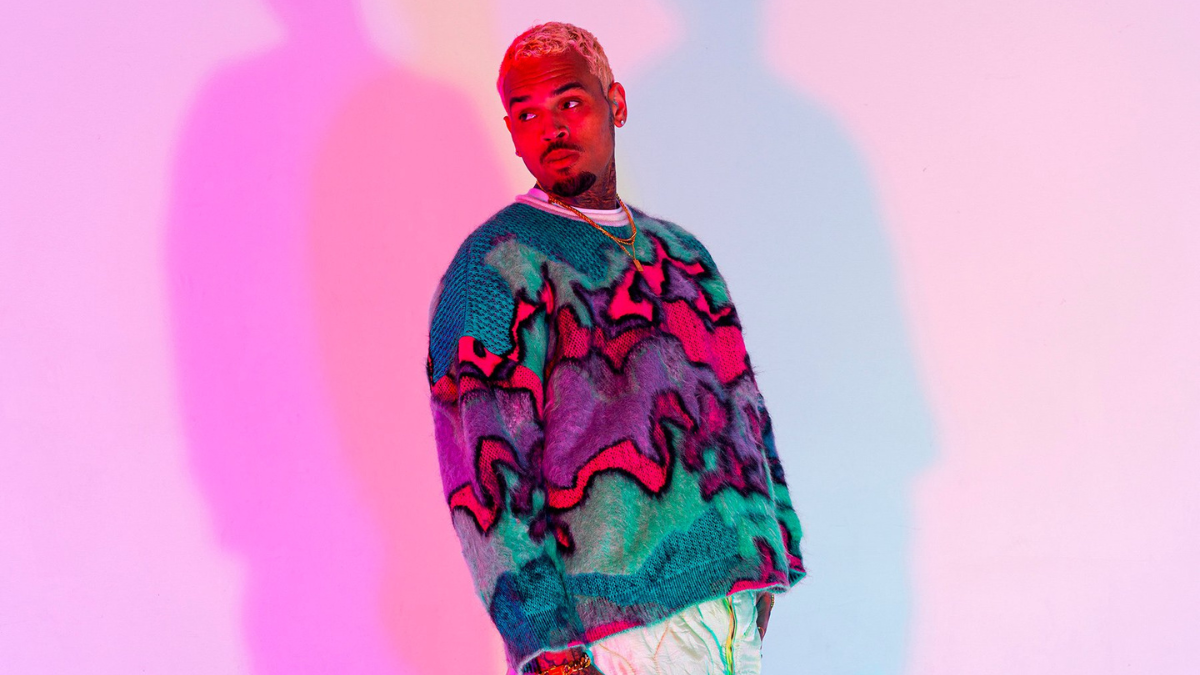

His keen interest in music and dance made him teach himself both the arts and he declares that Micheal Jackson was his role model. He also participated in the local church choir and local talent shows. His perfection in mimicry of an Usher performance made his mother realize his potential and she started looking for a record deal opportunity.


Chris Brown’s Voice Type & Vocal Range
Chris Brown has a light Lyric tenor vocal style. His vocal potential was first discovered by his mom when he was still a kid. Brown reveals to People magazine that he was 11 and watching Ushers performance ‘My Way’, and I began endeavoring to impersonate it. My mother resembled, ‘You can sing?’ And I resembled, ‘Well, no doubt, Mama.” in this way, and began to sing.
Voice Type: Light-Lyric Tenor
Range: E2-E5-G#5


Chris Brown’s voice sits high up. He has relative easiness in the fifth octave (Yeah 3x, This Christmas, Crawl). The strain really makes it difficult for him to sing there, yet he does not have much of a problem. He likewise sings to be a baritone in the E4-G4 range effortlessly.
Not so sure where this originates from, yet I have seen it many times previously. In fact, He is brighter and lighter than the spinto. Due to the fact that the spinto will have a more substantial, warmer and substantial voice. Chris’ voice is awfully splendid and light to be a spinto.
He has a light and thin voice. His voice is additionally surprisingly energetic. Thus he should be a light-verse tenor.
Achievements
At the tender age of sixteen, Chris Brown made his debut with an album titled “Chris Brown” featuring the runaway hit single “Run It”. This song topped the Billboard Hot 100 in 2005 making him the first male artist whose debut song topped the chart after Montell Jordan had achieved the same in 1995. The RIAA (Recording Industry Association of America) awarded the album a double-platinum certification and it sold more than 2 million copies in the US.
Riding on this success Chris Brown, American recording artist released his second studio album in 2007 November titled “Exclusive”. This album had two hit singles “Kiss-Kiss” featuring T-Pain and was number one and “With You” which became number two in the Billboard Hot 100 and was awarded a Platinum certification by RIAA. “The Forever edition” which is a deluxe version of his album with the single “Forever” was released in 2008 in May and this also peaked at number two position in Billboard Hot 100. “Graffiti” his third album was brought out in 2009 December and its official single “I Can Transform Ya” came up to number 20 in the Billboard Hot 100 becoming Chris Brown’s eighth hit on the charts.
Brown has other hits under his belt such as “No Air” with Jordin Sparks, “Shawty Get Loose” with Lil Mama and T-Pain, “Shortie Like Mine” with rapper Bow Wow all of which reached within number ten in the Billboard Hot 100. His dancing capabilities gave him an extra edge over other singers and he was compared to Micheal Jackson and Usher. On the negative side, Brown was given five years probationary sentence and 6 months community service for assaulting singer Rihanna. In 2010 May Chris Brown American recording artist brought out “Fan of Fan” a mixtape with Tyga and “Deuces” from this tape was released in 2010 June reaching the number one position in the U.S.
Musical Style & Influences
Chris Brown has referred to various artists as his motivation, overwhelmingly Michael Jackson. Chris Brown underlines that “Michael Jackson is the motivation behind why he involved himself in the music industry at the beginning of his music career. In “Fine China,” he represents Jackson’s impact both musically and outwardly as Britini Danielle of Ebony magazine mentioned that the melody was “reminiscent of Michael Jackson’s Off the Wall”.
And He also did mention that Usher is another role model in the music industry who seems to be a more contemporary figure for Brown. He discloses to Vibe magazine about Usher that he was the person who the youths gazed up to, in the singing and dancing world, admired him, and keeps up “If it was not for Usher, at that point Chris Brown couldn’t exist.”
Some critics suggested that Chris Brown’s first experience with R&B, perceiving his contemporary adaptions and flexibility in R&B music. As customary R&B prospered around him, the youthful singer started the development of the genre”. His first single “Run It!” as a “prelude to what Brown would keep on doing for the following decade: determinedly upset develops of blues and rhythm.
Business
TOURING AND THE SINGER
Touring artists experience a wide range of issues including physical and vocal fatigue, mental boredom, poor health…
Published
1 year agoon
May 10, 2023By
Contributor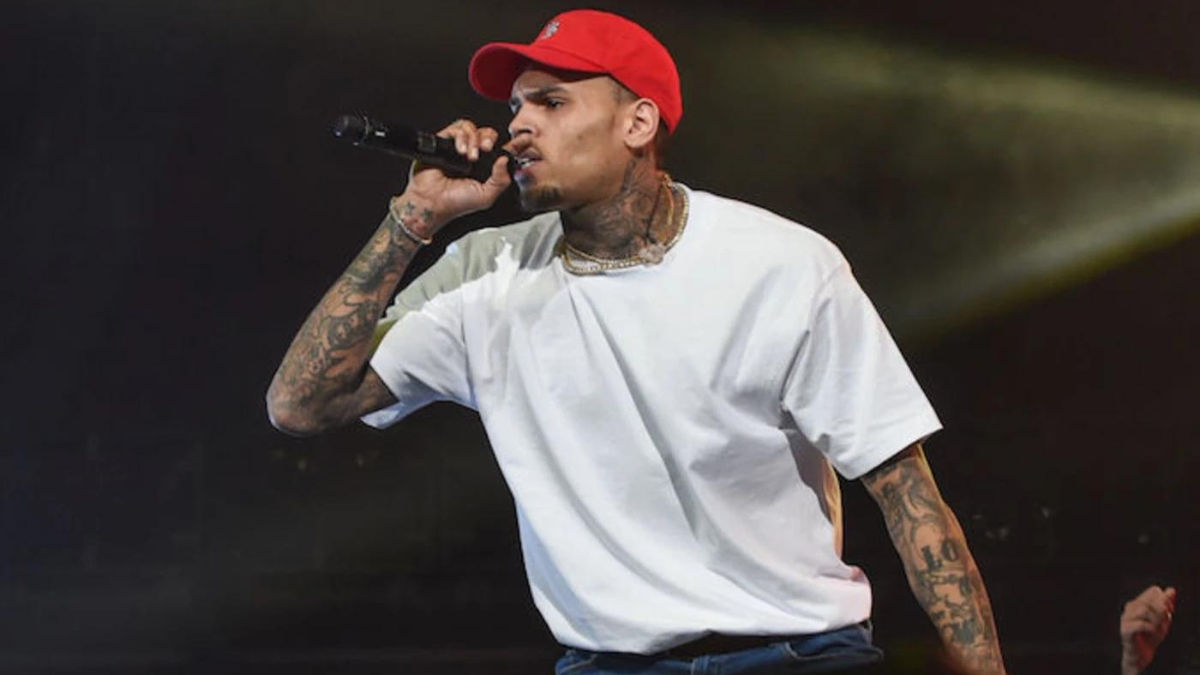

1. How important are vocal warm-ups and why?
Warm-ups are almost more important than vocal technique practice. It is vital to ensure we are getting the vocal ligaments and the intrinsic vocal muscles ready to do the job required during singing. When we talk we only use a limited range of pitches (around a major third or so) but when we sing we may use over two octaves. By warming up we are getting the different layers of the vocal folds ready to work at the higher frequencies required for singing. It is also important to get the larynx and the articulatory muscles ready to deal with singing lyrics. If we don’t get the voice ready and warmed up then we are running the risk of inducing vocal fatigue and ultimately misuse which could lead to vocal pathologies such as vocal fold oedema (swelling), nodules or polyps.
2. How important is vocal technique and why?
The reality is that there are many contemporary commercial singers with a successful career who do not have vocal technique to back their art or the vocal workload experienced as a touring singing/artist. It may be possible to get away with poor vocal technique in the short term or the studio setting, where it is possible to record as many tracks as necessary to get a good take. But when one is performing, live and touring, poor technique will eventually have a negative compound effect on the vocal folds, which increases the risk of injury. Having a well structured technical regime not only helps the singer to build range, stamina, strength and vocal control but will also help to readdress any imbalances acquired during the performance. Understanding how the voice works technically will help the singer to make the right choices when it comes to repertoire, vocal style, use of range or singing with a tired or sick voice.
When it comes to the creative side technique will ensure that the artist can realise their creative vision, to sing unhampered by limitations of vocal range, the ability to transition easily between registers, breath management, vocal tone, the ability to sustain long notes, vocal qualities and dynamic control.
3. What physical and mental effects can touring have on an artist? How can this contribute to vocal health problems?
Touring artists experience a wide range of issues including physical and vocal fatigue, mental boredom, poor health, disruption to dietary and daily routines, feelings of isolation from friends and family. Whether they are travelling in a band van, tour bus or flying, most artists suffer from disruption in sleep, daily routine, dietary habits etc. When there is a group of people travelling together in close proximity there is also an increase in risk for communicable illnesses such as colds and cases of flu. Flying may cause dehydration and vocal fold swelling due to an increase in atmospheric pressure. This may cause the voice to be husky or hoarse and limit the singer’s ability to access their upper/lower ranges. Environmental conditions such as air-conditioning, heating, humidity, dryness, altitude and cold temperatures will also impact the singer’s physical, mental and vocal health. In addition, if they are crossing time-lines then jet-lag will contribute by reducing physical and mental function. Being tired, stressed, rundown or dehydrated will impact the vocal fold’s ability to function optimally resulting in loss of range, tonal quality and sustainability.
4. Are vocal health problems more common today? Or do you think artists are more open about their health as it is mediated in the press more?
I think it is a combination of instant media and the kind of pressure, vocally and physically the current day artist is under. Pressure to ensure they sell their music and make money for their label etc. This means that they tour heavily and they are obliged to do a heavy load of publicity and networking, in turn, their voice does not get as much rest as it needs to do its job on stage night after night. Depending on the label/management tours may be more intensive with more performances packed in over a shorter period. Some labels have a policy of not allowing their artist to do more than three shows in a row, but not all artists are well looked after in this way. In the past, it would have been viewed more negatively by the public/fans if they knew that the artist was having vocal problems. Today people seem to think it’s par for the course as there is so much in the media about singers who have to cancel tours and gigs due to voice problems.
5. If there is no option to cancel a show a steroid injection may be required. What are the effects of this? Is it only temporary? Can it do more harm than good?
Steroid injections can be very effective in the short-term to help a performer get through a show. When a major artist cancels it means the loss of millions of dollars. So the management tries hard to prevent this from occurring. One-off steroid injections do not commonly have long-term medical side-effects. It only becomes problematic when this becomes a regular dose. Having an injection does carry a risk of injury if it is not done safely and accurately. High or prolonged doses of steroids (injections or tablets) will impact the body systemically e.g. excess fat distributed weirdly, prone to infections, and a risk of injury to the vocal folds such as nodules, haemorrhage or laryngitis.
Given appropriately and safely a steroid injection can save the day.
6. Are there any other ‘quick fix’ medicines that are used on tour? What are the effects?
I can’t think of any. I imagine any kind of analgesia that helps with pain might be used in some cases. Depending on the type of the analgesia will depend on the side effects. Obviously, narcotics run the risk of dependency and poor motor control. Some of the more common over the counter types such as paracetamol and codeine can cause constipation if taken regularly. Salicylates (e.g. aspirin) act as blood thinners and are not recommended for singers as a possible side-effect could be vocal fold haemorrhage.
7. Is it necessary to have surgery or will the body fight back if it’s allowed complete vocal rest?
Surgery depends on the type and severity of the vocal pathology as well as the time constraints of the artist. If there is pressure for the artist to get out and work e.g major tour, imminent album launch or significant performance then the powers that be are more likely to opt for surgery. If the artist/singer is not under such pressure or can’t afford surgery then alternative options may be considered at first.
- These days vocal nodules are generally treated with therapy and vocal technique if they are in the pre-nodular or soft stages. Some surgeons will treat hard nodules with surgery, though I have seen cases where nodules have not been surgically removed and the singer had successful rehabilitation through voice therapy and correction of poor vocal technique.
- Vocal polyps and severe haemorrhages, cysts and granulomas generally require surgical intervention. The singer is then on vocal rest for 2-3 weeks.
- Vocal oedema requires rest and addressing the cause.
- Infections and laryngitis do not require surgery.
It very much depends also on the doctor i.e. their training and experience. An ENT surgeon or ENT/laryngologist who works with singers a lot will tend to only do surgery if necessary, and there is no response to voice therapy and/or addressing the cause.
Vocal rest will help in many instances but the problem may re-occur if the cause is not addressed. Many common voice issues in singers can be dealt with through rest, rehydration, good vocal technique and a balanced healthy diet.
8. Do you think audiences have higher expectations when going to watch an artist perform? ie: Pitch, physically performing.
With the use of auto-tuning in the studio, audiences have come to expect a singer to sing perfectly. This is compounded by the impact of music videos and the use of lip-syncing, as well as the use of auto-tuning in the live setting. Having said that the general listening audience is not always focusing on things such as pitch or even lyrics, for them, it’s the experience of the live performance.
9. What is your advice for a singer going on tour?
Where possible sleep – cat naps are as useful to the body as whole night sleeps, ensure you are getting 1.5 to 2 L of water a day, take dietary supplements, avoid respiratory infections like the plague. Take your own pillow on tour, healthy snacks, eyeshades, earplugs, nebulizer with normal saline, throat massager and most importantly straws so you can do regular straw therapy.
Don’t expect your voice to be able to work optimally if you don’t look after it, excessive talking, alcohol, smoking, drugs, poor diet and late nights will prevent your voice from working to its best.
At the end of the day, this is your job and what your audience is paying for. You are the equivalent of a vocal athlete. Follow these tips:
- maintain a regular and personalised vocal exercise regime
- do warm-ups and downs before/after a performance
- if possible change repertoire, vocal range and performance energy to accommodate the days when you or your voice are fatigued
- check in regularly with a vocal coach who understands how to keep you vocally fit and healthy
- do physical exercise to ensure your body is supporting your voice.
- Keep well hydrated
- Maintain a healthy and balanced diet with supplements to boost your immune system
- sleep whenever possible
- avoid sick people!


Why Are So Many Rap Concerts Getting Canceled?



CHRIS BROWN: The Top Recording Artist ALIVE [Vocal Range]


TOURING AND THE SINGER
Trending
-



 Business2 years ago
Business2 years agoThe Day Jordin Sparks Stopped Singing
-


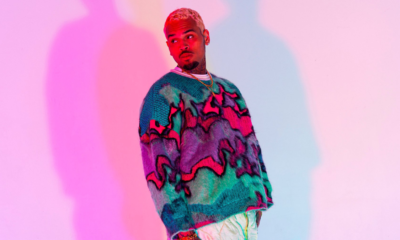


 Business1 year ago
Business1 year agoCHRIS BROWN: The Top Recording Artist ALIVE [Vocal Range]
-



 Business2 years ago
Business2 years agoTVM-TV LIVE
-

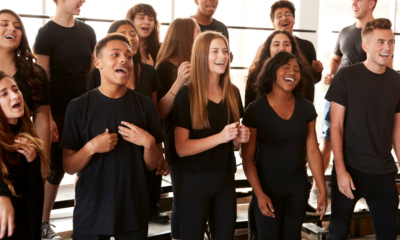

 Business2 years ago
Business2 years agoBenefits of Joining a Choir
-

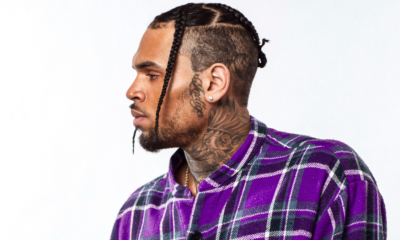

 Business2 years ago
Business2 years agoChris Brown’s 12th Studio Album “Breezy”
-

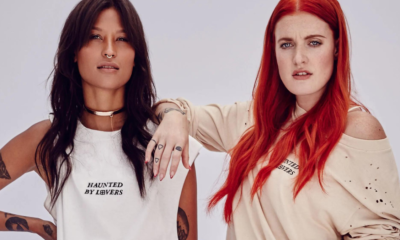

 Tech7 years ago
Tech7 years agoICONA POP
-



 Business2 years ago
Business2 years agoFood for Singers: The Diva Diet
-

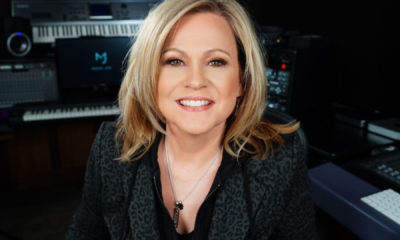

 Business2 years ago
Business2 years agoINTERVIEW WITH MAMA JAN


